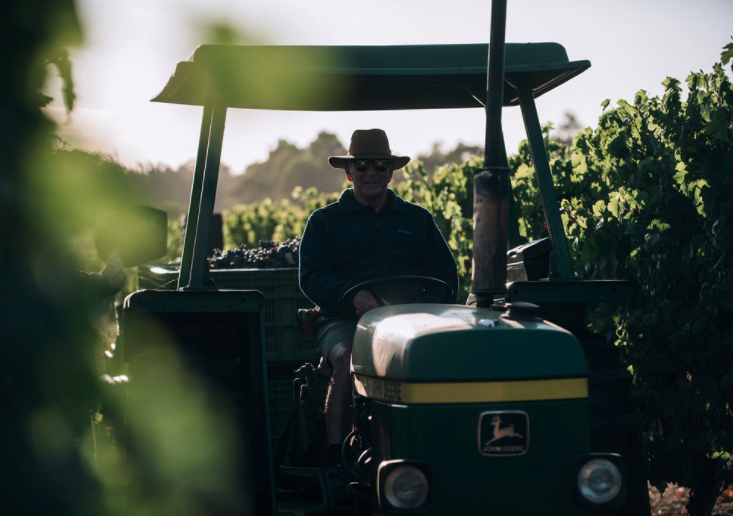John Lethlean writes about Fraser Gallop Estate in The Australian
John Lethlean, The Weekend Australian Magazine
March 21, 2020
By 6.30am the nets are off, the buckets are out and the lingua franca of the vineyard is softly spoken French, filtering through the trellised rows of vines like dappled sunlight. With a smattering of English, Spanish, Italian and German.
All over the district, on hundreds of vineyards large and small, the picking teams – travellers, mostly, from the northern hemisphere or Latin America – are out among the rows. The viticulturists are on hand making sure the fruit they’ve worked hard all year to nurture is handled properly. The vineyard hands buzz around in little banana buggies distributing empty buckets, collecting filled ones. In some cases, even the managing directors are driving the tractors that ferry the picked fruit back to the winery.

In the winery, harvest is an exciting, more-balls-in-the-air-thanusual time of year for winemakers. On top of everything else they must get that fruit into tanks, or pressed, now. There’s very little romance about forklifting palettes of cabernet sauvignon into a destemming machine, which in turn pumps whole berries off to cooled tanks for the slow process of fermentation to begin. It’s hard, urgent work. And it’s all happening at my back door. Within 10 minutes’ drive from home are probably 10 wineries; within 20, about 100. It’s a significant part of the local economy but you can wake up in a wine-growing region and not be aware of it. The estate agent next door takes his kids to school; the builder three doors down has already left for a job. But just out of town, on hundreds of properties that employ thousands of people – from crews of pickers to managing directors, with viticulturists and winemakers somewhere in between – it is the most important time of year.
Vintage. Eight weeks of the year, give or take, when super-important decisions are made about when to pick the various plots of fruit and get them into the winery, the vineyards come alive. At Fraser Gallop Estate, where my wife works, you can see the classic Australian wine business at work. It’s difficult to think of any other Australian agricultural model where something is grown, processed and valueadded on site, marketed and distributed, all on the one property.
The typical Australian wine brand, built around an estate, represents a cluster of diverse talents within usually, a fairly small business by most standards.
Vintage is the business cycle’s apotheosis, the money shot. For a lot of poor souls along the eastern seaboard, the summer bushfire crisis has wrought varying degrees of havoc on their fruit and/or vines. Margaret River hasn’t had the same issues, although yields are down and the vintage itself earlier than many in the industry remember.
By 11am, the cabernet picking is over. It’s harder than it looks if you want to make a few bucks. In the
winery, that fresh-picked fruit is the first priority, but it doesn’t mean constant technical evaluation of
previous days’ work stops. Or the plunging, the pumping, the liaison with clients (if your winery contracts
to others); the cleaning up; the readying of everything for tomorrow’s 6am start when the Frenchies return. There’s a methodical sense of purpose to it all. And winemaker Clive Otto is smiling. “The yield is down,” he says “but the fruit is brilliant. It’s a great time of year.”